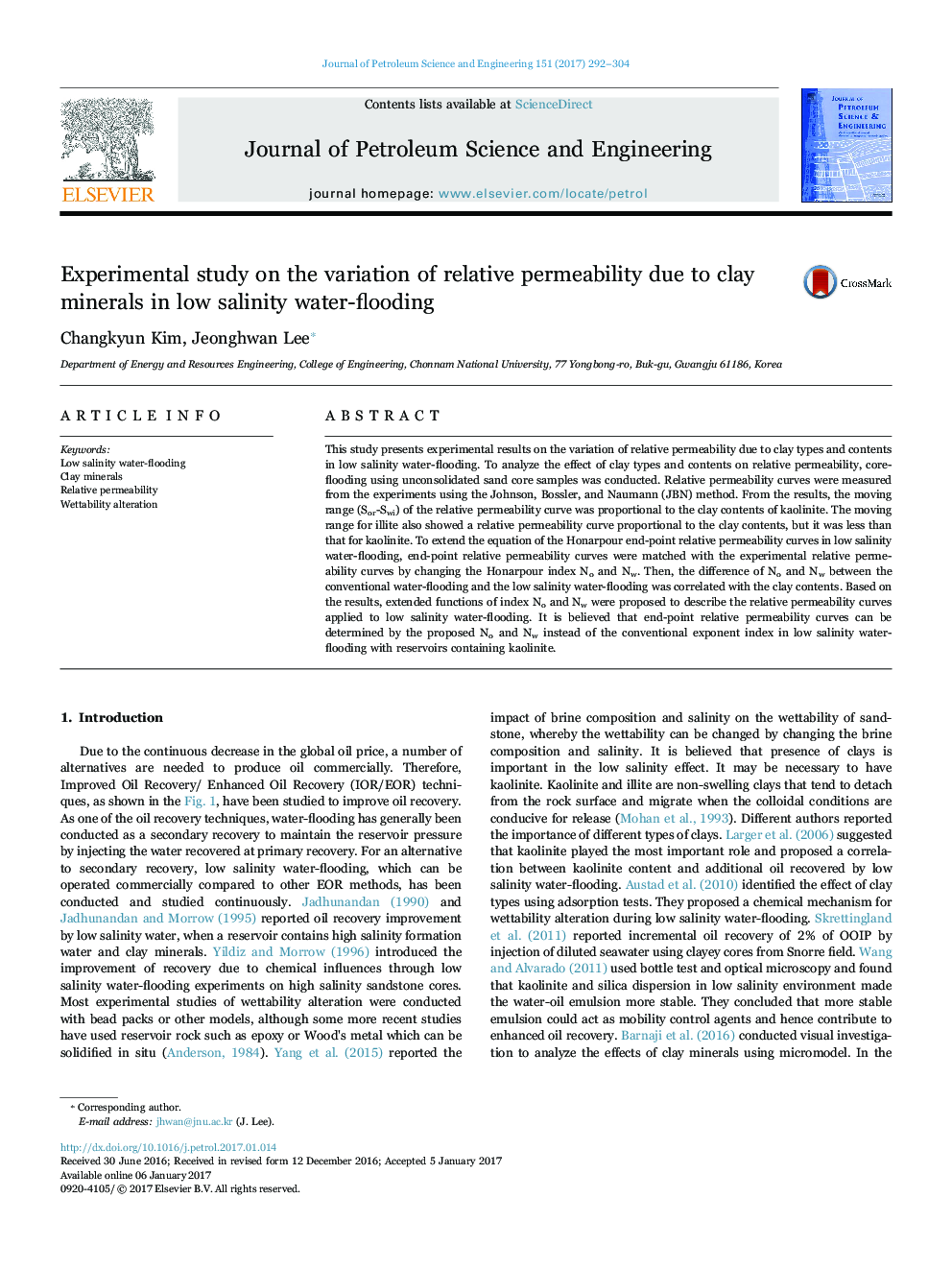| Article ID | Journal | Published Year | Pages | File Type |
|---|---|---|---|---|
| 5484382 | Journal of Petroleum Science and Engineering | 2017 | 13 Pages |
Abstract
This study presents experimental results on the variation of relative permeability due to clay types and contents in low salinity water-flooding. To analyze the effect of clay types and contents on relative permeability, core-flooding using unconsolidated sand core samples was conducted. Relative permeability curves were measured from the experiments using the Johnson, Bossler, and Naumann (JBN) method. From the results, the moving range (Sor-Swi) of the relative permeability curve was proportional to the clay contents of kaolinite. The moving range for illite also showed a relative permeability curve proportional to the clay contents, but it was less than that for kaolinite. To extend the equation of the Honarpour end-point relative permeability curves in low salinity water-flooding, end-point relative permeability curves were matched with the experimental relative permeability curves by changing the Honarpour index No and Nw. Then, the difference of No and Nw between the conventional water-flooding and the low salinity water-flooding was correlated with the clay contents. Based on the results, extended functions of index No and Nw were proposed to describe the relative permeability curves applied to low salinity water-flooding. It is believed that end-point relative permeability curves can be determined by the proposed No and Nw instead of the conventional exponent index in low salinity water-flooding with reservoirs containing kaolinite.
Related Topics
Physical Sciences and Engineering
Earth and Planetary Sciences
Economic Geology
Authors
Changkyun Kim, Jeonghwan Lee,
